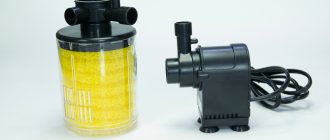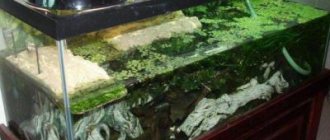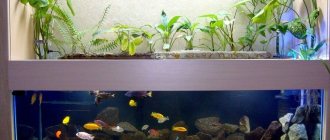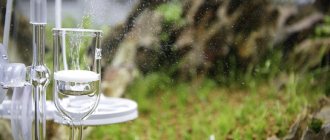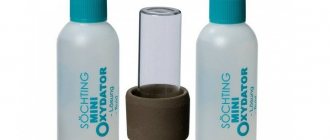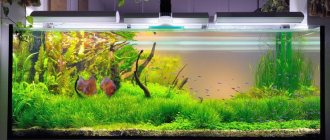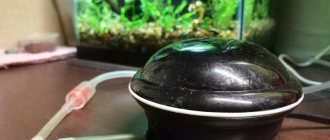Advantages of RAS
Many businessmen use the classic method of growing sturgeon as a business - in reservoirs. Despite the fact that for this purpose it will be necessary to purchase large plots of land, the RAS system also has its advantages. Such as:
- Growing fish in a closed reservoir does not harm nature.
- The businessman will be able to control the entire process of diluting the product himself.
- The cultivation of livestock does not depend on seasonal factors - it is possible to breed it indoors all year round.
- Relatively low water consumption.
- Natural forces do not affect the cost of fish, so profits are predicted with increased accuracy.
- It is possible to constantly monitor the development of living creatures, the conditions of their maintenance, and carry out preventive actions against diseases by breeding environmentally friendly fish products.
- The complex can be installed in different climatic conditions, because cultivation is carried out indoors, where it is possible to regulate the desired microclimate.
- By keeping temperature, light and the saturation of water with necessary substances under control, it is possible to regulate the speed of development of the fish.
- Fairly little competition due to high start-up costs.
Yandex pictures
Monitoring and control systems
Usually the last one to install is a monitoring and control system that will determine the success of the production cycle or destroy the entire enterprise. Just one mistake in its operation will lead to the death of the entire system. It is recommended to continuously monitor key parameters such as water level, temperature and pressure in the air supply system. If the owner of a fish farm has enough money to purchase an oxygen system, then oxygen consumption should also be controlled. Other indicators are important, but their change is slow and requires periodic checking (twice a week, weekly). Alarms and messages must be transmitted via loudspeaker to maintenance personnel.
Necessary equipment
The only negative present in this matter is the rather expensive equipment. The final price of a RAS system depends on the areas used and the capacity it is aimed at. In addition, RAS systems can be universal, aimed at different types of livestock. And they can be developed for the conditions of a certain variety.
For example, it is possible to buy a RAS installation for breeding clariid catfish. If you buy equipment designed to produce 50,000 tons of fish products per year, it will cost 50,000 €. This RAS system is installed on approximately 300 square meters. m. Another 10,000 € must be paid for the development of a technological project specifically for the existing premises and purposes. Typically, the price includes consultations during installation and launch.
If a small business was planned, approximately 5,000 tons of fish products per year, money would need to be invested in the business idea for the development of a technological project for installing the facility in the amount of 10,000 €. Typically, such equipment is made of a universal type, namely, it allows you to breed any type of fish and even shellfish.
The budget type of equipment will occupy an area of approximately 150 square meters. m. with power consumption of 3.7 kW. To purchase it, you will need to invest about 25,000 € in a business idea. This RAS system includes:
- pipelines, approximately 2500 €;
- containers for sturgeon, about 3600 €;
- cleaning system, around 19,000 €.
The economic waste plan also needs to include the purchase of liquefied oxygen or high-pressure cylinders, or an oxygen generator.
Yandex pictures
Biofiltration/nitrification
Biofiltration involves two processes that convert potentially harmful ammonium into relatively harmless nitrate by beneficial bacteria.
Ammonium-oxidizing bacteria convert it to nitrite:
2NH4+ + OH— + 3O2 => 2H+ +2NO2— + 4H2O
Nitrite-oxidizing bacteria convert it into nitrate:
2NO2— + O2 => 2NO3—
As a rule of thumb, 1 kg of feed produces 0.03 kg of ammonium. Its processing produces nitrate, which is usually not a problem. However, large amounts of carbon dioxide are produced. In addition, when processing 1 g of ammonium, the biofilter produces 4.42 g of nitrate, 5.93 g of carbon dioxide and consumes almost 4.34 g or more of oxygen and 7.14 g of alkalis.
There are many types of biofilters. They are based on the principle that it is necessary to create the maximum area for the growth of beneficial bacteria. Bacteria practically don’t care what the substrate is, so the choice is very diverse.
Unsuitable biofilter design with gravel (top) and foam rubber (in the center). Below is a more functional model with a light plastic filler
The biofilter with gravel is not functional.
It does not work for long because the bacterial film grows quickly and cannot be cleaned. The gravel is too heavy to work with.
The solution to this problem is to use lighter filler, for example, plastic bioballs. Although this makes the structure lighter, it does not solve a number of other problems such as contamination and cleaning. A submerged filter quickly develops an anaerobic environment when the flow stops, cutting off the oxygen needed by beneficial bacteria.
Probably, a filter design with foam rubber as a filler will seem more valuable. However, they clog quickly and, unlike their smaller aquarium counterparts, are extremely difficult to clean. The difficulty of cleaning is due to the fact that contaminated modules weigh a ton.
Classic drip tower biofilter
The illustration shows a drip tower filter
The trickling filter is a classic type of biological filter, combining biological treatment, aeration and degassing in one standard process. Water cascades irrigate the substrate on which bacteria develop, diffusion of oxygen and removal of carbon dioxide occur. Columns can have a diameter of 3.5 cm or more.
Drip column and spray bar
A drip column may not look like a column. In the illustration above, the drip filter is buried along with the culvert below the water level. In the latter case, it is called a drip sump. It is important to note that systems in which spraying occurs over the entire surface of the substrate work more efficiently.
The illustration on the right shows a tower irrigated filter (1.2) dug into the ground and a smaller model of a drip filter (3.4).
Smaller versions
Smaller copies of trickling filters are usually made from polyethylene barrels. The brown color of the litter indicates good growth of beneficial bacteria.
Drum biological filter
The illustration on the left shows a drum filter with a motor (1.2) and without it (3.4).
This apparatus consists of a rotating drum, half immersed in water, which acts as a substrate for bacteria. Like a trickling filter, there is also aeration and degassing. The drum filters shown in the illustration are actually positively buoyant and rotate due to air bubbles or water flow from the pump.
The main problem with drum mechanical filters, in fact, is the presence of a motor. At the same time, one should not underestimate the huge mass of bacterial film and the aggressive aqueous environment that affects the mechanics of the filter. One of the most common solutions to this problem was to create a floating drum without an engine.
On the right is a diagram of the operation of a biological filter with propeller cleaning. In the figure, the filter is in filtering mode. During flushing, the propeller turns on, which stirs up the dirt in the filler, and the dirty water goes into the sewer. Sediment is removed through bottom drainage.
Propeller-washable biological filter
includes a sealed container with filler balls, which act as a substrate for bacteria and also perform mechanical filtration.
There are models in which backwashing of the balls is carried out not with the help of a propeller, but with the help of rising air bubbles
. The suspension passes through the narrow isthmus of the apparatus and accumulates in its upper part.
An example of such a filter is Polygeyser® devices, designed for biological filtration and water purification from fine suspended particles in a single cycle. Mechanical cleaning is carried out by the passage of water upward through the ball filler matrix. Standard 1/8" bead media and New Nitrotech™ Media capture 100% of particles 50 microns in diameter and up to 45% of particles 5-49 microns in diameter. Biological filtration is carried out by nitrifying bacteria that grow on the surface of the balls (active area - 120 m2/m3). Each air wash ensures that excess deposits on the thin bacterial film are removed. In addition, cleaning helps enrich the biological filter with oxygen, a key component of nitrification [www.ornamentalpondfish.com/equip_polygeyser.html].
Fluidized bed filters (learn more)
These devices are typically used to treat large volumes of water, with the fluidized sand bed providing a high area for bacteria to grow in a small space. The name “fluidized bed” is derived from the fact that the sand is lifted by water flows and becomes suspended.
Downflow microbead filter
A relatively new filter design uses very small plastic balls as media that float in the chamber when a current of water passes through them. The high active area, low heat loss and small size make this device a competitor to the fluidized bed sand filter.
Moving bed filter
The filler is in suspension when the water passes through the biofilter. In this case, the filter is actively aerated. Strong mixing and aeration ensure good contact of contaminated particles with the filler.
Equipment diagram for a fish farm
Any project to organize a fish farm includes a standard list of equipment:
- Swimming pools. Most often, polypropylene round or rectangular containers are used. The depth depends on the type of fish being bred. On average, up to 100 kg are bred per m3 of area. living creatures.
- Water treatment devices. This is a whole complex of equipment that ensures high-quality water preparation according to the specified parameters.
- Mechanical and biological purification unit with liquid degassing;
- Oxygenator – responsible for saturating water with oxygen;
- Ozonizer – provides safe sterilization of the aquatic environment, as well as special oxygen enrichment;
- Ultraviolet lamps – disinfect liquid in swimming pools;
- Feeders – allow you to supply feed in the required quantity at a given time;
- Pumps. They provide systematic circulation of water in reservoirs, required for productive fish breeding.
- Incubators. They are used if you plan to grow fish products from caviar.
Regardless of the volume of production and the scale of the business, mini RAS for fish breeding or large industrial fish farms - they all need this list of equipment to ensure rapid reproduction of fish products and guarantee the profitability of production.
Yandex pictures
Primary water treatment unit.
The main sources of water supply for RAS can be deep wells, wells, local water supply, nearby rivers or lakes. Quite often the water in them does not meet regulatory fish farming requirements. A very large number of underground water sources in Belarus contain iron and heavy metals in doses exceeding the MPC. Often these sources also contain nitrogen ions. In this regard, such water must be treated before being supplied to the RAS, removing from it all substances harmful to fish. For these services, you must contact specialists involved in primary water treatment. Based on an assessment of water analyzes from a particular water source, they can recommend appropriate equipment, identifying its individual strengths and weaknesses.
Photo 1: Primary water treatment unit.
Swimming pools
In shape they are round, rectangular, longitudinal, oval or longitudinal with rounded corners. The most technologically advanced are round pools. The ratio of the diameter to the height of the pool should be 3:1 (N. Barulin, 2016). In such pools, the circular movement of water creates a uniform flow throughout the entire depth, allows the entire volume of water to be enriched with oxygen and does not have stagnant anaerobic zones, and the concentration of suspended matter occurs in the center, at the bottom of the tank. It is advisable to make the bottom of a pool intended for growing trout or African catfish cone-shaped, while for sturgeon or eel it is better to be flat, with the possibility of supplying water for cleaning both through the top and bottom of the pool. They are often equipped with a double drain: one for supplying recycled water for treatment, the other for removing sludge outside the RAS. The disadvantage of round pools is the irrational use of the total area of the RAS, which cannot be said about square and rectangular pools.
Scheme 1: Design options for pools for RAS.
Conditions for keeping fish
Buildings for various purposes are used for the RAS system - garages, hangars, houses, and even basements, but important provisions must be adhered to. The space must be at least 30 square meters. m., necessities include the presence of lighting, electricity, water and sewerage, ventilation and heating systems.
There are much larger premises; it all depends on how many fish are planned to be raised. There is no need to select a building with high ceilings for sturgeon breeding, since it will be difficult to maintain a suitable temperature regime in it. When there is no building of its own, it is rented.
It is also preferable to furnish it with essential furniture, a sink.
The energy consumption of the entire closed water supply device can be 2-6 kW, so you need to check the serviceability of the electrical wiring. Containers for livestock are placed on the floor; nothing is required to be deepened.
When growing sterlet, you need to adhere to some important points: the density of the planting of living creatures, the composition and speed of the water flow, suitable feed and the systematic distribution of it, water and air temperature. The density of the fish product can be from 40 to 100 kg. per 1 m3. The fish reproduces by larvae, a natural method.
Mechanical filters
They are structurally of the MSBF type (mechanical mesh drum filter), disk, with functions similar to MSBF, and also in the form of tubular or plate settling tanks. Very often, RAS purify water from suspended matter using submersible filters with a fixed plastic load. The advantage of MSBF and disk filters is that manual labor is required for maintenance; they are quite reliable in RAS with a high hydraulic load. The degree of purification of solids in MSBP: with cells of 30 microns (μ) - 99%, 60 μ - 48% and 100 μ -21% (M. Hochleithner, 2010). Disadvantages - high consumption of rinsing water: the smaller the mesh cells, the greater the water consumption with partial blockage of the cells, electricity consumption, higher price compared to other devices. However, MSBFs are very widely used in modern RAS. The advantages of settling tanks and submersible filters are a high degree of water purification from suspended matter, 90 - 95% (Dr. F. Ruemmler, 2010) with the sedimentation of very fine particles, and, what is very important, partial nitrification and diffuse denitrification. These filters are used in all trout RAS in Belarus. Their disadvantage is manual labor when regenerating the load and draining contaminants.
Scheme 2: Installation of MSBF in RAS
Feeding fish in RAS
In RAS it is recommended to feed sturgeon only with dry feed. It is given in the form of granules of various sizes, suitable for each stage of fish development, and the components of dry food can be combined in different ways. In RAS, the increased rate of feed use is positive, since it minimizes the amount of waste separated, and this reduces the load on water treatment systems. The economic justification for using RAS says that the profitability of sterlet breeding can be 42.8%.
Yandex pictures
Temperature
A certain temperature is required for the growth and development of fish products. It appears that a temperature from +18 C to +24 C is suitable.
In winter, you will have to control the temperature at the desired level. If you lose sight of this, the water will simply freeze, and this is prohibited. You will also need a lot of energy consumption, although it is possible to work on the heating circuit and spend minimal money. There is no need to resort to heating with electricity or gas, as this will cost serious expenses. It is preferable to use an ordinary solid fuel boiler, and use wood waste as fuel.
If you breed fish in poor conditions, they will start to get sick, especially when they are fry.
Denitrifiers
This is a unit designed to convert nitrates accumulated in circulating water into nitrogen gas, N2. Its advantage is that having a denitrifier in the RAS eliminates the need for additional use of water to maintain the level of nitrates in the RAS water at the optimum. Disadvantage: constant care is required, adding methanol or other substances to the water to maintain anaerobic heterotrophic bacteria at the proper level. In RAS, where diffuse denitrification takes place, this unit is not used.
Pool volumes
Initially, you need to worry about the equipment with which the living creatures are maintained. Definitely, swimming pools come first here.
To breed fish up to 0.3 kg, you need to worry about a round or rectangular pool. It is enough for it to have a diameter of 1.6 m and a depth of up to 90 cm. For those fish whose size ranges from 300 g. up to 2 kg., you need to purchase a “house” with parameters of 2.2 m. and 1.3 m. You need to take into account that 1 sq. m. m. allows breeding up to 60 kg. sturgeon.
Yandex pictures
Features of sturgeon planting. What happens if you understock or overstock?
Fish stocking density is a calculated value and depends on:
- pool area;
- age and weight of sturgeon at planting;
- degree of growth during breeding;
- calculation by weight at the end of the fertile period;
- yield indicators (% survival rate) for any type of fish depending on age, etc.
Various factual (statistical) information on the list of indicators will be able to correct some values in the density of fish planting and its varietal composition. This is due to the fact that any body of water is personal in its ecological systems. It is almost impossible (even in one cascade or system) to find water bodies that are identical in their own characteristics.
Inappropriate stocking density will always have a negative impact on production outcomes:
- Understocking will provoke financial losses from incorrectly obtaining capacity, although large personal loads may follow.
- Overstocking usually reduces the quality indicators of fish (average weight, pathologies), production (reduced conversion during feeding) and business (increased costs for feed, treatment, decreased prices on the market, etc.).
Breeding fry
If it was decided to catch fry at home, then separate containers will be required for reproduction. The fish is ready to breed at the 6th year of life. It is necessary to understand that the survival rate of fry is quite low even if all the rules for keeping them in the first stage of life are followed.
It is necessary to systematically check all indicators, from water quality and system functioning to the development of living creatures. Proper and uniform breeding will make it possible to grow up to 6 tons of sturgeon every year. Sometimes you will need to use the services of professionals to maintain the RAS system, check fish, and study water quality. Costs for such services are 50,000 rubles. annually.
Yandex pictures
Waste removal
One of the most modern waste storage technologies is the use of geotextile bags
. Their porous surface allows solid particles to be contained but water to pass through. In many cases, a flocculating agent is added to improve the separation of sediment and water. Alum is also added for coagulation, which separates dissolved phosphorus.
Vacuum sewer truck
The simplest way to dispose of waste is to use it as soil fertilizer. This can be a problem when the soil is covered with snow or is not dry enough for heavy equipment. Thus, a storage facility with sufficient capacity for the waste generated over 9 months is still required.
Waste settling tanks
Anaerobic and aerobic settling tanks are often used.
compost pit
Composting is an excellent alternative when creating large quantities of fertilizer.
Business plan
Breeding sturgeon at home is a business project.
After launching and setting up the RAS installation, the next step will be the purchase of fry, feed and consumables. Planting material for sturgeon fry weighing 5 grams is purchased, the cost is 10-15 rubles. per piece
Sturgeon is a bottom-dwelling fish and eats most of its food at the bottom, so the stocking density is taken from the calculation of the bottom area of the pool. A suitable density for fry stocking is 300 pcs. for every sq. m. of the bottom of the reservoir. For a novice businessman, a more suitable option would be to breed sturgeon to a weight of 500 grams. for restaurant establishments.
Restaurants buy fish weighing 500 grams, this weight of the carcass is portioned, namely from 500 grams. sturgeon comes out cooked portion 370 g. More often than not, a restaurant buys approximately 60 kg. sturgeon per month, they will be able to work using non-cash payments, many pay with money on the spot.
Sturgeon reaches a weight of 500 grams. in 6-9 months
To grow 1 ton of sturgeon in 9 months. you will need to purchase:
- Fry - 1,800 pcs. cost 15 rub. PC. – 27,000 rub.
- For every ton of grown fish, 1,400 kg will be required. mixed feed – 70,000 rub. Electricity costs will be approximately 30,000 rubles for the entire period (taking into account water heating in winter).
- Other minor waste RUB 50,000. The main expenses for breeding 1 ton of sturgeon are approximately 177,000 rubles.
Restaurants buy sturgeon for an average of 500 rubles. for 1 kg.
Income from every kg. about 322 rub.
From the sale of 1 ton of fish, the income will be 322,000 rubles.
The calculations performed are approximate and may vary depending on prices in the city; each business will require a personal deduction.
With the growth of the business and the acquisition of practical skills, after a couple of years it is possible to achieve the production of black caviar from 5-6 year old female sturgeons, with the market price of black caviar starting from $1,000 per kg, the profitability of the activity can be significant.
Yandex pictures
Cultivation container
The illustration on the left shows polyethylene (1,2,3) and fiberglass (4,5,6) tanks.
Almost any sealed container of sufficient volume, from a swimming pool to concrete structures, can be used in fish farming. More details about cylindrical pools and the features of their cleaning are written in the article.
Polyethylene tanks
Many farms use simple, cheap and durable (up to 25 years) polyethylene containers. The smooth surface makes them easy to clean, and their light weight makes them easy to carry and install. They are suitable in most cases, but due to their high softness and pliability, they require support for the bottom. Another challenge is creating watertight connections through the side wall or bottom.
Fiberglass Tanks
The illustration on the left shows fiberglass tanks
One of the main advantages of fiberglass containers is the variety of materials, shapes, and sizes they can take. The container consists of many side panels fastened together, and the bottom part is made of one large sheet. Smooth walls make the container very easy to use, but when it starts to leak, it is a real disaster. Shown at right is a traditional fiberglass tank mounted on a solid, rigid concrete foundation used for outdoor fish farming.
Fiberglass containers can have almost any shape and size. The material from which they are made is incredibly flexible, easy to cut, drill and join into a single structure. Repairing damage or subsequent modifications are also relatively easy to implement.
Large tanks can be easily transported in parts, which are then assembled on site.
Plywood/wood tanks
The illustration on the left shows plywood/wooden tanks
A simple and inexpensive solution is to use plywood panels to make a pool. This method is practiced in Hawaii, where wooden panels are held together in a circle and then a sealed blue PVC swimming pool liner or a more expensive industrial black film liner is placed inside. The bottom of the container is filled with several centimeters of sand, and the central drain line is buried up to the outlet pipe.
A very long, low channel can be made from plywood panels buried in the ground and a liner. The illustration shows a greenhouse channel for raising tilapia, which is 5 meters wide and 18 meters long.
Steel tanks
Steel tanks
For the construction of more monumental tanks, sheets of galvanized or epoxy-coated steel, connected by bolts, are suitable. This material allows you to build a container 32 meters in diameter and 4 meters in height. The bottom is usually a porous concrete drain with a heating coil into which the panels are embedded. In order to maintain heat and make it easier to observe the fish, the tank is dug into the ground.
An option for metal construction is tanks made of corrugated aluminum and steel panels with cushioning material.
Concrete pools and channels
The illustration on the left shows concrete pools and channels
Concrete ponds have been used for fish farming for several years. They are perfect for these purposes, but everything needs to be carefully planned before construction, otherwise it will be impossible to change their shape or location.
Start-up costs
The biggest expense at the first stage is investing in the purchase of equipment. Total expenses will be from 1,400,000 rubles. You will need immediately:
- Swimming pools. The total price of pools for breeding 5 tons of fish per year and depends on the manufacturer - from 1,000,000 rubles.
- Pumps (from 9,000 rubles per piece).
- Loading for a biofilter (from 10,000 rubles per piece).
- Oxygen generators (from 20,000 rubles per piece).
- Incubators for caviar (from 50,000 rubles).
- Other equipment (measuring instruments, scales, containers for transportation, etc.)
In addition to everything, you need to purchase fry. Cost of fry weighing 1 gram. from 10 rub./pcs. So the cost of purchasing 10,000 fry will be no less than 100,000 rubles.
When purchasing one gram fry, you need to take into account that the mortality rate is approximately 60%. The total costs for starting the plan, not taking into account the construction of the premises and its repair work, will be from 1,600,000 rubles.
The main expenses for the development of sturgeon, per year:
- Energy consumption is on average 40,000 kW per year per 5 tons of farmed livestock.
- Salary and fees to the Pension Fund, for 2 workers – 400,000 rubles. annually.
- Taxes (USN) - 150,000 rubles. annually.
- Compound feed, average 1.4 kg. per 1 kg. growth of sturgeon. The average price of compound feed is approximately 40 rubles/kg. Breeding 5 tons of sturgeon will cost about 200,000 rubles.
- Rent (when you don’t have your own building).
Yandex pictures
